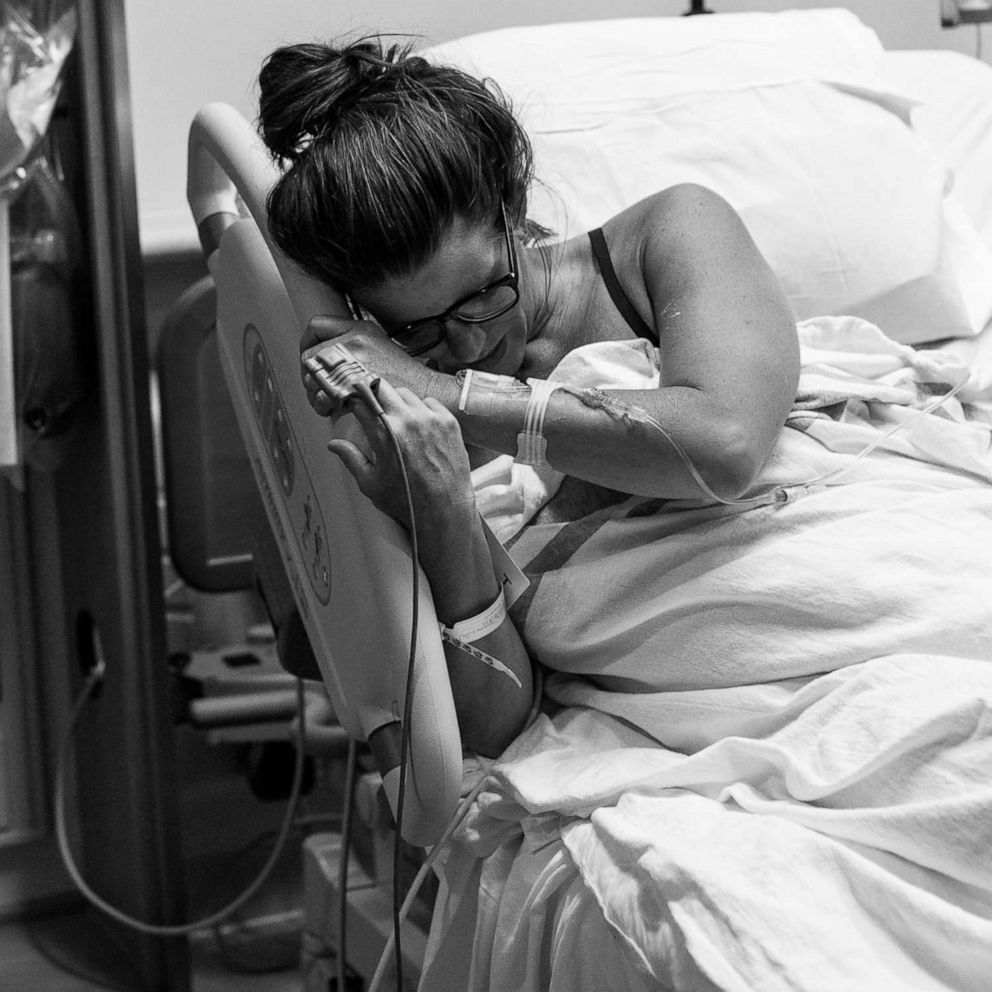Brittany Mahomes shares warning for moms after suffering fractured back
Mahomes shares two children with her husband, Patrick Mahomes.
Brittany Mahomes is sharing a warning for fellow moms after suffering a fractured back.
Mahomes, a mom of two children with her husband, Kansas City Chiefs quarterback Patrick Mahomes, shared a photo of herself on Instagram Wednesday with the message, "Just a daily reminder. Once you have kids please take care of your pelvic floor. Seriously."
Mahomes, 28, signed off the message as "a girl with a fractured back."
The pelvic floor is the group of muscles and tissues located at the bottom of the pelvis that support the pelvic organs, including the vagina, uterus, ovaries and bladder. Both pregnancy and vaginal childbirth can weaken the muscles of the pelvic floor, according to the American College of Obstetricians and Gynecologists.
During pregnancy, the pelvic floor plays a critical role in holding the growing uterus. As the uterus grows, the muscles of the pelvic floor grow and stretch as well.
Mahomes gave birth to her youngest child, a son named Bronze, in November 2022.
She and her husband welcomed their first child, a daughter named Sterling, in February 2021.
The Sports Illustrated Swimsuit model has not publicly shared additional details of her injury, such as the connection between her back injury and the pelvic floor.

While pelvic floor complications are common after childbirth, a bone fracture is far less common, according to Dr. Carolyn Swenson, a board-certified urogynecologist and chief of urogynecology and pelvic reconstructive surgery and associate professor at University of Utah Health, told ABC News.
"Bone fractures, or injuries to the pubic bones, the tailbone and the back, occur in less than 1% of vaginal deliveries," said Swenson, who does not treat Mahomes. "Most women who give birth vaginally don't have one of these injuries."
What to know about the pelvic floor and pregnancy
While the connection between Mahomes' back injury and her pelvic floor are not immediately known, Swenson said the fact the mom-of-two is encouraging other moms to seek pelvic floor support is important.
Swenson noted that as many as 15% of women experience a tearing of a pelvic floor muscle during a spontaneous vaginal delivery.
Post-delivery, pelvic floor complications can range from vaginal pain and frequent urination and leakage to pelvic organ prolapse, when the pelvic organs, like the uterus and bladder, drop down, according to ACOG.
In addition to supporting the pelvic organs, the pelvic floor also helps support the pelvis and the spine, so weakening during delivery could also impact both of those areas.
"Any of these pelvic floor disorders can be really uncomfortable to talk about and patients often feel really alone," Swenson said. "So having, you know, people in the spotlight, celebrities, share personal experiences with these conditions and disorders really can help the larger community in terms of raising awareness and helping people see that they're not alone in dealing with these conditions."
Swenson continued, "And hopefully it will also let them know that there are treatments, that there are physicians and providers out there who can help them get better."
Women who experience persistent pelvic pain more than six weeks after giving birth should see an OBGYN, according to Swenson. An OBGYN may do further diagnostic testing and refer them to a specialist, if needed.
Swenson said that physical therapy is currently the best treatment option available for pelvic floor complications, even though it is not always available or prescribed to all women.
"Unfortunately, we don't have overwhelming data supporting routine pelvic floor physical therapy after delivery, but pelvic floor physical therapy is really the only intervention we have to help rehabilitate the pelvic floor," she said. "So if patients have access, and they really want to do everything they can to rehabilitate their pelvic floor after vaginal delivery, that would be doing a course of pelvic floor physical therapy."







